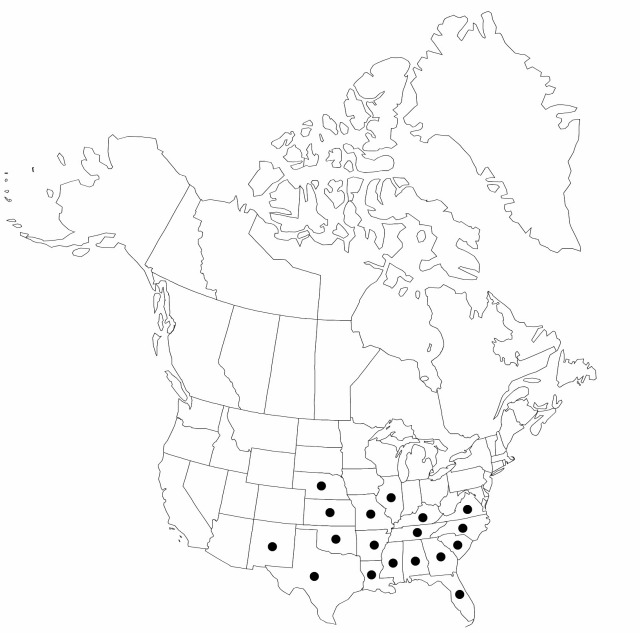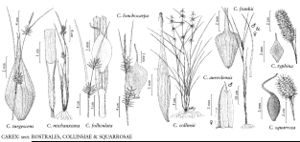Carex aureolensis
Syn. Pl. Glumac. 2: 223. 1855.
Plants colonial, long-rhizomatous. Culms (10–)20–85 cm. Leaves 2–8.5 mm wide, sparingly scabrous. Spikes 4–6, erect; lateral spikes pistillate with a few staminate flowers proximally and rarely also distally, narrowly elliptic, 11–4.5 × 5.5–11 mm; terminal spike staminate, sometimes gynecandrous or abortive, 9–42 × 1.5–3.5 mm. Pistillate scales with distinct body, 2.9–7(–11.8) × 0.4–0.9(–1.1) mm, body 1.5–2.5 mm, translucent, apex with long, scabrous awn to 1.4–4.5(–9) mm, exceeding perigynia. Staminate scales ± tightly imbricate, lanceolate, narrowly ovate, or oblong-obovate, 3.3–9.3(–12.5) × 0.9–1.6 mm, apex acute to truncate-erose or retuse, sometimes with scabrous awn to 0.1–6.2(–9.2) mm. Perigynia horizontal, 3.2–5.1(–5.6) × 1.3–2.5 mm, minutely pustulate; beak 1.2–2.1 mm, smooth. Achenes trigonous-obovoid, sides strongly concave, 1.2–1.8(–2.1) × 0.9–1.3(–1.5) mm, less than 2 times as long as wide; style deciduous, straight or sinuous.
Phenology: Fruiting summer.
Habitat: Wet meadows and woods, muddy margins of lakes and ponds, roadside ditches
Elevation: 0–500 m
Distribution

Ala., Ark., Fla., Ga., Ill., Kans., Ky., La., Miss., Mo., Nebr., N.Mex., N.C., Okla., S.C., Tenn., Tex., Va., Mexico (Coahuila, Nuevo León), South America.
Discussion
Carex aureolensis has been recognized as a distinct species based on its staminate and pistillate scale morphology, growth habit, and distribution.
Selected References
None.
